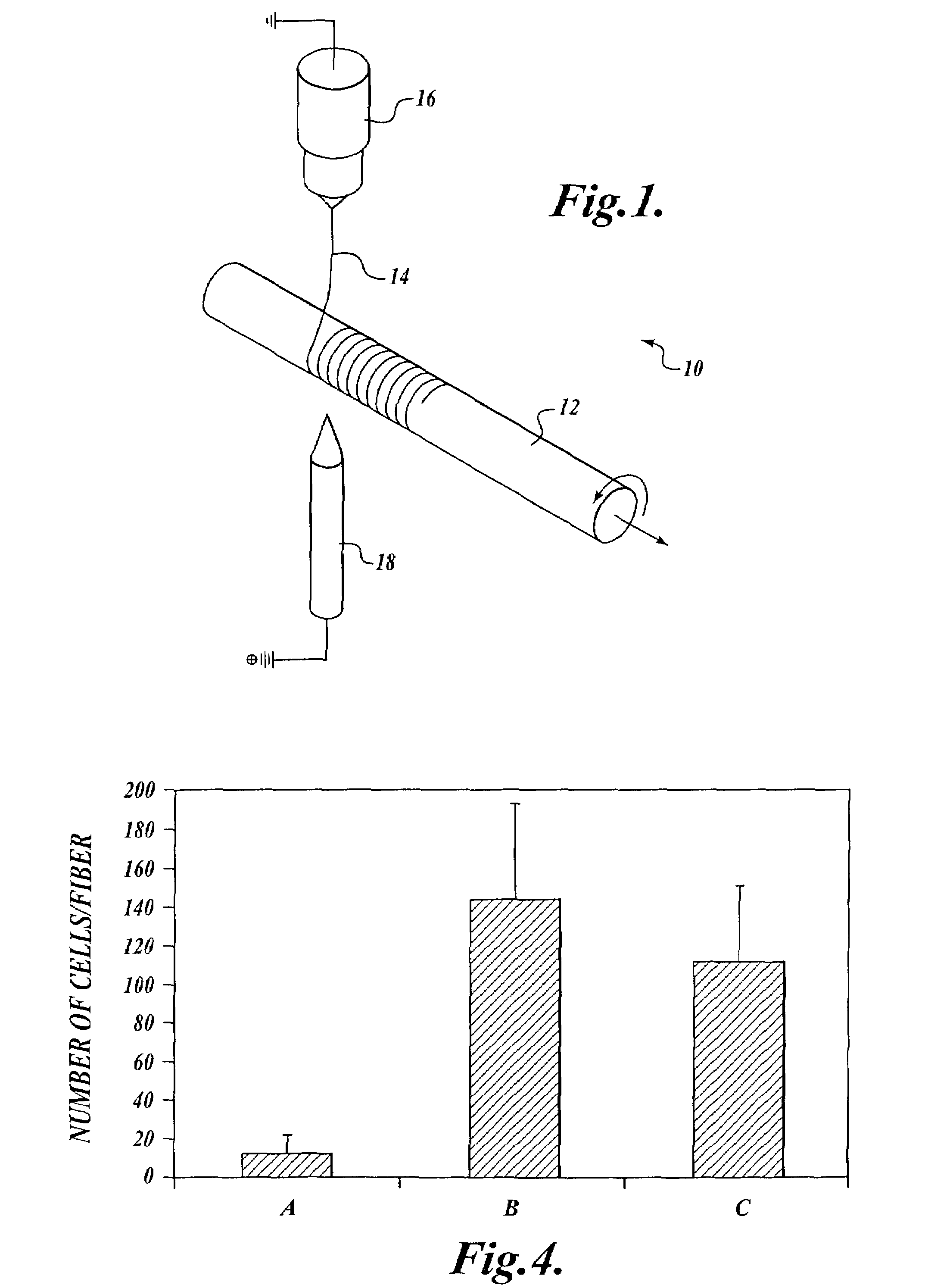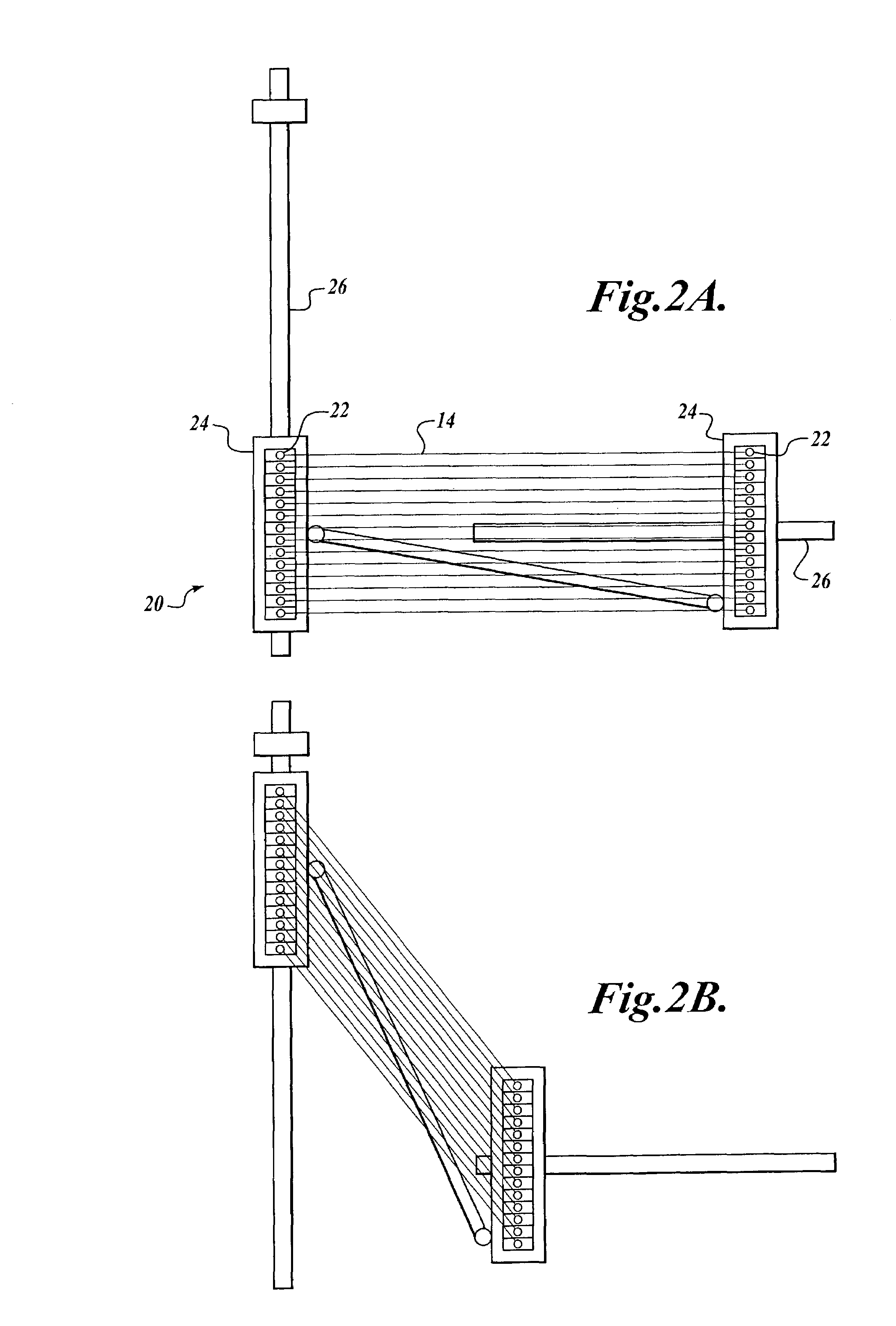Bioengineered tissue substitutes
a technology of bioengineered tissue and tissue replacement, which is applied in the field of bioengineered tissue replacement, can solve the problems of eliciting many unfavorable reactions in the body, requiring enormous health care resources to repair and replace diseased tissue structures and organs, and limited lifetimes
- Summary
- Abstract
- Description
- Claims
- Application Information
AI Technical Summary
Benefits of technology
Problems solved by technology
Method used
Image
Examples
example 1
Parallel-Fiber Scaffolds for Small Diameter Vessel Substitutes
[0122]This Example describes the development of small diameter small diameter blood vessel substitutes using arrays of microfibers that mimic the arrangement of elastin fibers in the medial layer of arterial blood vessels. The arrangement of elastin fibers in the medial layer of arterial blood vessels is shown in FIG. 6.
[0123]Parallel microfiber arrays were used as scaffolds to tissue engineer the medial layer of small diameter vessel substitutes. Several questions were addressed to determine whether a parallel-fiber scaffold is a viable approach for enhancing medial layer strength and reducing the time for fabrication of vessel substitutes over current tissue-engineering methods. (1) Is an adhesive protein coating needed to attach cells to the microfibers upon seeding so as to achieve continuous cell layers between adjacent fibers? (2) Fiber spacing is likely critical to the timely formation of robust cell layers between...
example 2
Vessel Substitutes Formed with Tubular Scaffolds
[0139]This Example describes the development of vessel substitutes using tubular scaffolds made from arrays of microfibers that mimic the arrangement of elastin fibers in arterial blood vessels. The experiments described here address the question of whether concentric helices of microfibers be assembled into a scaffold, and if so what strengths may be achieved in a bioengineered, vessel substitute medial layer using such a scaffold. A tubular construct made using concentric helices of 10-micrometers diameter fibers as a scaffold showed elastin fibers aligned with the microfibers at 7 days, with a dense elastin network at 33 days. The burst pressure of the blood vessel substitute at 80 days averaged 3372 mmHg.
A. Materials and Methods
[0140]Tubular scaffolds was created by wrapping concentric layers of microfibers around a mandrel (a thin candy cane), stabilized with longitudinal fibers and end rings. The microfiber arrays were constructe...
example 3
Mechanical Properties of Degradable Polymers for Microfiber Scaffolds
[0144]This Example describes the evaluation of mechanical properties of four different degradable polymers for microfiber scaffolds.
[0145]The ideal material for the microfiber scaffold has the following features: (a) it induces good cell adhesion and spreading upon seeding, facilitating the production and assembly of extracellular matrix proteins; (b) it has degradation byproducts that are not problematic in vivo; (c) it has an initial modulus comparable to or slightly greater than that of elastin, and that reduces over time to effectively transfer load to the bioengineered structure as is matures, and (d) the material is easily manufacturable into different architectures.
[0146]Although initially it would seem logical to use elastin as the scaffold, it is not appropriate for several reasons. The design philosophy is to transfer mechanical load from the substrate to the bioengineered construct as it matures. It is u...
PUM
 Login to View More
Login to View More Abstract
Description
Claims
Application Information
 Login to View More
Login to View More - R&D
- Intellectual Property
- Life Sciences
- Materials
- Tech Scout
- Unparalleled Data Quality
- Higher Quality Content
- 60% Fewer Hallucinations
Browse by: Latest US Patents, China's latest patents, Technical Efficacy Thesaurus, Application Domain, Technology Topic, Popular Technical Reports.
© 2025 PatSnap. All rights reserved.Legal|Privacy policy|Modern Slavery Act Transparency Statement|Sitemap|About US| Contact US: help@patsnap.com



